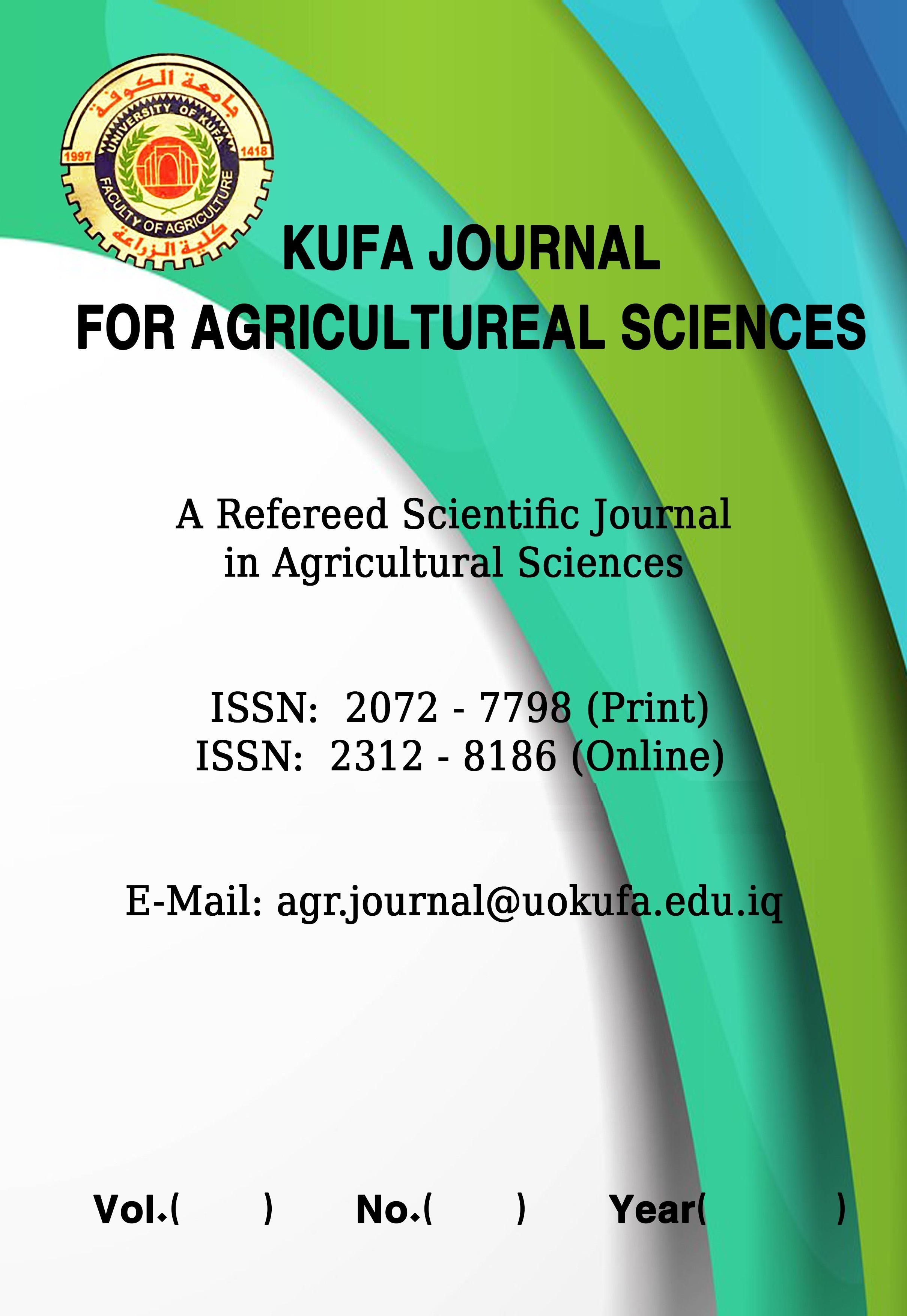Response of Jasmine rice to different levels of irrigation and organic fertilization under SRI cultivation method
DOI:
https://doi.org/10.36077/kjas/2023/v15i2.10351Keywords:
Rice, Jasmine, Irrigation levels, Organic fertilizer, System of rice intensificationAbstract
Maintaining a certain level of rice production must coincide with maintaining soil fertility, reducing pollution to the environment, and reducing water consumption. A field experiment was carried out during the 2020 summer growing season in a spot of Al-Issa county-Abbasiya district in the province of Najaf, in order to study the effect of different levels of irrigation and organic fertilizers on the growth, yield and components of the local rice variety Jasmine. The experimental plants were planted on June 17, according to the rice intensification system (SRI) method, by seedling method, at distances of 25 cm between seedlings and lines, with one seedling in the hole. Weeds were removed by hand three times. It was designed as a factorial experiment using a randomized complete block design (RCBD) with three replicates, where the irrigation levels (daily, 3 or 7 days irrigation intervals) as the main factor, while the organic fertilizers at two levels (10 and 5 ton.hˉ¹) were the secondary factor. The results showed that irrigation at 3 days intervals in clay soil mixed with the use of 10 ton.h-1 of organic fertilizers in SRI gave the highest rates of growth characteristics and yield components of Jasmine rice. In the case of irrigation and soil conditions in the study site, SRI is recommended to reduce water consumption and maintain an acceptable level of soil fertility, taking into account maintaining a level of production.
Downloads
Downloads
Published
How to Cite
Issue
Section
License
Copyright (c) 2023 Abood Waheed Abood Al-Esawi

This work is licensed under a Creative Commons Attribution 4.0 International License.
Kufa Journal for Agricultural Sciences is licensed under the Creative Commons Attribution 4.0 International License, which allows users to copy, to create extracts, abstracts and new works from the Article, to alter and revise the Article, and to make commercial use of the Article (including reuse and/or resale of the Article by commercial entities), provided the user gives appropriate credit (with a link to the formal publication through the relevant DOI), provides a link to the license, indicates if changes were made and the licensor is not represented as endorsing the use made of the work. The authors hold the copyright for their published work on KJAS website, while KJAS responsible for appreciate citation for their work, which is released under CC-BY-4.0 enabling the unrestricted use, distribution, and reproduction of an article in any medium, provided that the original work is properly cited.














